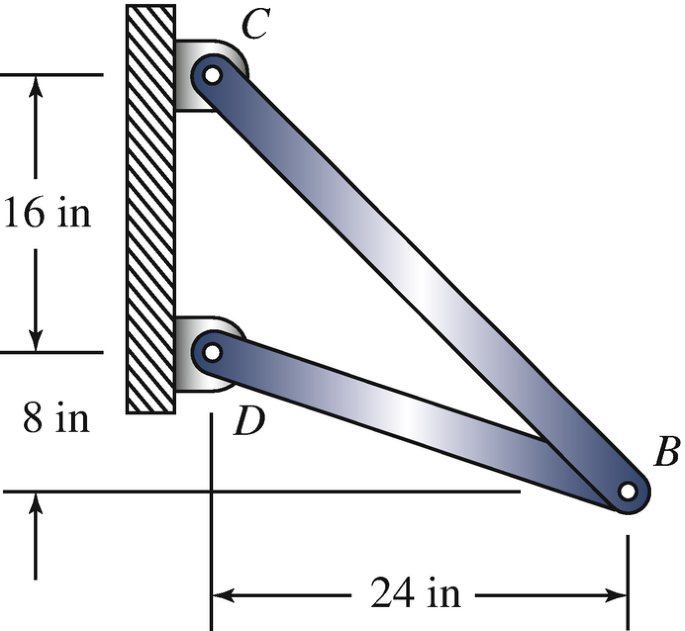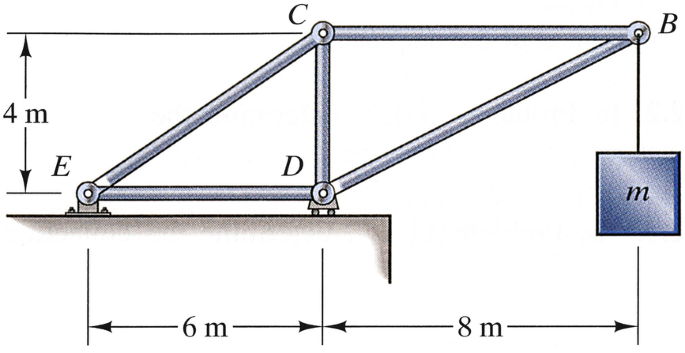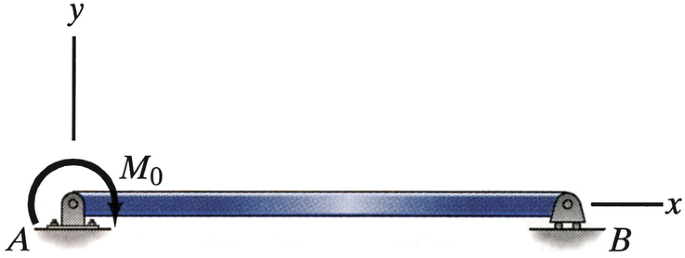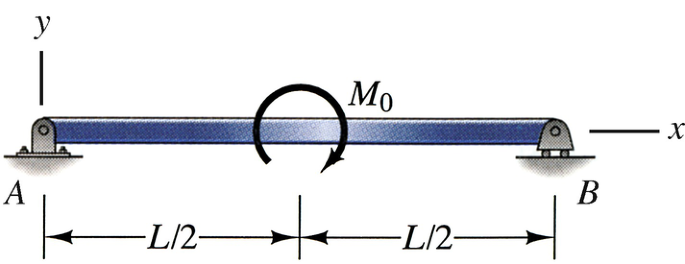Abstract
When an archer draws a bow and shoots an arrow, it demonstrates that energy can be stored in an object when work is done to deform it relative to a reference state. Many advanced techniques used in mechanics of materials, including finite elements, are based on energy methods. This chapter discusses some of the fundamental concepts underlying these methods. The work done by a force or couple is first defined. By equating the work done by stress components in deforming a cubic element, the strain energy per unit volume of an isotropic linear elastic material subjected to a general state of stress is shown to be \( u=\frac{1}{2}\left({\sigma}_x{\varepsilon}_x+{\sigma}_y{\varepsilon}_y+{\sigma}_z{\varepsilon}_z+{\tau}_{xy}{\gamma}_{xy}+{\tau}_{yz}{\gamma}_{yz}+{\tau}_{xz}{\gamma}_{xz}\right). \) With this result the strain energy of simple structural elements subjected to loads can be derived. For example, the strain energy of a prismatic bar of length L and cross-sectional area A that is subjected to axial loads P is U = P2L/2EA. By subjecting objects or structures to a force at a point and calculating the work done by the force, the displacement of the point in the direction of the force can be determined. Strain energy can be applied to a much broader class of problems using Castigliano’s second theorem. Consider an object of elastic material that is subjected to N external forces F1, F2, … , FN. Let ui be the component of the deflection of the point of application of the ith force Fi in the direction of Fi. Then ui = ∂U/∂Fi, where U is the strain energy resulting from the application of the N forces. If couples also act on an object, the angle of rotation of the point of application of the ith couple Mi in the direction of Mi is given by θi = ∂U/∂Mi. Examples of applications to trusses and beams are presented.
Access this chapter
Tax calculation will be finalised at checkout
Purchases are for personal use only
Author information
Authors and Affiliations
Appendices
Chapter Summary
11.1.1 Work
If the point to which the force F in Fig. (a) is applied moves along the x axis from x = 0 to x = x0, the work done is


If the force is a constant F = F0, the work is W = F0x0. If F is proportional to x and its value is F0 when x = x0, the work is \( W=\frac{1}{2}{F}_0{x}_0. \)
When a couple of moment M rotates through an angle from θ = 0 to θ = θ0 in the same direction as the couple, the work done is
If the moment is a constant M = M0, the work is W = M0θ0. If M is proportional to θ and its value is M0 when θ = θ0, the work is \( W=\frac{1}{2}{M}_0{\theta}_0. \)
11.1.2 Strain Energy
The strain energy per unit volume of an isotropic linearly elastic material subjected to a general state of stress is
11.1.3 Axially Loaded Bars
The strain energy of a prismatic bar of length L and cross-sectional area A that is subjected to an axial load P is
11.1.4 Beams
The strain energy of an element of a beam of width dx (Fig. (b)) is


11.1.5 Castigliano’s Second Theorem
Consider an object of elastic material that is subjected to N external forces F1, F2, …, FN (Fig. (c)). Let ui be the component of the deflection of the point of application of the ith force Fi in the direction of Fi. Then
where U is the strain energy resulting from the application of the N forces.


If couples also act on an object, the angle of rotation of the point of application of the ith couple Mi in the direction of Mi is given by
Review Problems
-
11.30
The two bars have cross-sectional area A = 1.4 in2 and modulus of elasticity E = 12E6 psi. If an upward force F = 20, 000 lb is applied at B, what is the vertical component v of the deflection of point B?

Problems 11.30–11.31
-
11.31
The two bars have cross-sectional area A = 1.4 in2 and modulus of elasticity E = 12E6 psi. If an upward force F = 20, 000 lb is applied at B, what is the horizontal component u of the deflection of point B?
-
11.32
The truss is made of steel bars with cross-sectional area A = 0.003 m2 and modulus of elasticity E = 220 GPa. The suspended mass m = 5000 kg. Determine the vertical component v of the deflection of point B.

Problems 11.32–11.33
-
11.33∗
The truss is made of steel bars with cross-sectional area A = 0.003 m2 and modulus of elasticity E = 220 GPa. The suspended mass m = 5000 kg. Determine the horizontal component u of the deflection of point B.
-
11.34
Use strain energy to determine the angle through which the beam rotates at A, and confirm the value given in Appendix F.

Problem 11.34
-
11.35∗
Use strain energy to determine the angle through which the beam rotates at A.

Problem 11.35
Rights and permissions
Copyright information
© 2020 Springer Nature Switzerland AG
About this chapter
Cite this chapter
Bedford, A., Liechti, K.M. (2020). Energy Methods. In: Mechanics of Materials. Springer, Cham. https://doi.org/10.1007/978-3-030-22082-2_11
Download citation
DOI: https://doi.org/10.1007/978-3-030-22082-2_11
Publisher Name: Springer, Cham
Print ISBN: 978-3-030-22081-5
Online ISBN: 978-3-030-22082-2
eBook Packages: EngineeringEngineering (R0)









